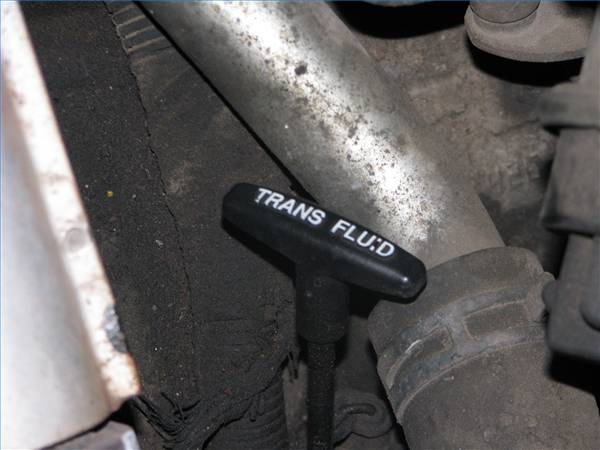
Transmission fluid is one of the most important consumables in your automotive system. It is the durable lubricant that coats all moving parts of your Taurus' transmission, and when it runs low or becomes too dirty, it can cause accelerated wear on transmission parts and make shifting gears feel rougher than usual. It's a good idea to check the level of transmission fluid whenever you stop to get a tank of gas. If it's low, you can add more yourself, but if it's dirty, take the car to a mechanic to get the fluid changed.
Check your owner's manual to find out what grade of transmission fluid is recommended for your Taurus. Tauruses of different model years and options packages call for different grades of lubricant. Also note in the manual the under-hood diagram, which identifies the dipstick for transmission fluid on the rear left side of the engine.
Start the car and drive it around for at least 10 miles or 20 minutes to get it fully warmed up and lubricated. Combine this task with other errands so you don't waste gas. If you don't already have transmission fluid or a funnel, drive to an auto-supply store to run in and get some.
Park the car on as level a surface as you can find and leave it running. Pull the hood-release lever, open the hood and prop it up with the support arm. Be careful not to touch the engine, which will be hot, as you look closely at the rear left corner of the engine block. You should see a plastic ring atop a thin metal pipe. This is the transmission-fluid dipstick. Don't confuse it with the oil dipstick, which is at the front center of the engine.
Carefully pull out the dipstick, wipe it clean with a rag and reinsert it. Make sure it's pushed in all the way, then pull it out again to look at it.
Look for the line marked "Warm full." If your Taurus has an after-market transmission-fluid dipstick, it may not be marked with separate full lines for warm or cold engines, but most of these dipsticks do. If your transmission-fluid level is not up to this line, you need to add more. You should also take note of its color and smell. If it looks very dark or smells like it's burnt, it should be changed. In this event, don't bother adding more unless it's very low, and take it to a mechanic soon for a transmission-fluid flush and change.
Add more transmission fluid if necessary. You must use a funnel with a long, flexible tube to pour the fluid in through the dipstick hole. You should only do this with the engine running, and you must be careful to add the fluid just a little at a time. About an ounce at once is good. After adding some, wait a minute or so for it to cycle through the transmission, then check the level with the dipstick again. It's important to do it this way because it's hard to bleed out transmission fluid if you add too much, and adding too much can cause serious transmission problems.